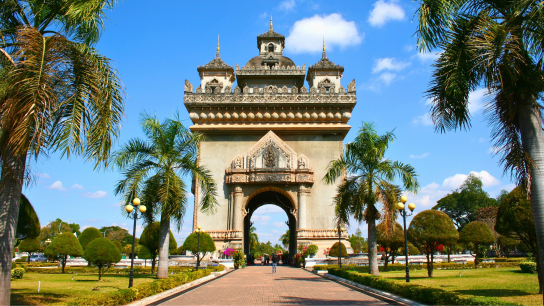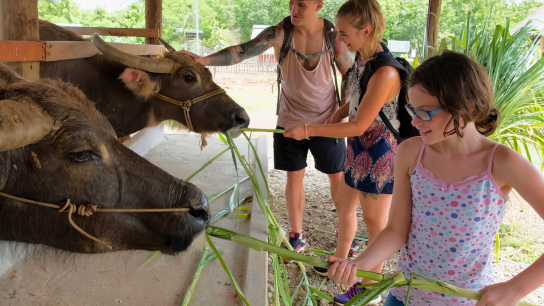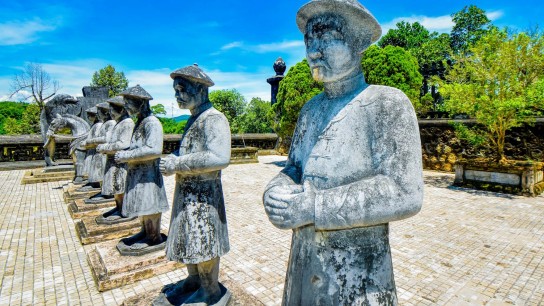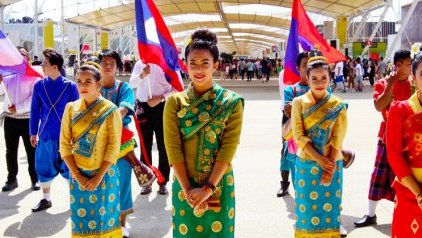8 Traveling Tips in Laos
Laos is a beautiful country in South East Asia. With the tropical climate, you can travel to Laos year-round to discover its wonderful culture, costumes, food, religions, etc. Furthermore, Laos lies next to Vietnam, Cambodia, Thailand, Myanmar, and China. This can be a perfect base for you to travel to Asia with ease. Here are some tips for you to have a perfect trip to this amazing country.
Tip 1: Laos’s weather can be a little extreme
You should always check the weather whenever you go on vacation. Laos has a tropical climate with two distinct seasons: wet and dry seasons. The wet season runs from May to October and the dry season runs from November to April. From the end of January to May, the temperature rises over 35oC along with a lot of rain. The best time to visit Laos is from November to February. During this period, there will be less rain and the temperature is quite cool, mostly under 30oC.
If you plan to go during the rainy season, you should expect traveling will be slowed down a bit because roads in Laos are not incredibly well maintained when the rain comes, drives have to find other roads, or wait for the rain to stop.
For more details: Best Time to Visit Laos
Tip 2: How to apply for Laos Visa
Unless your country is an ASEAN member, you have to get a tourist visa to visit Laos. But this process is super easy and convenient. Except for some countries from Africa and the Middle East, most of the other countries can get a visa on arrival. All you have to do is show up at Laos’s borer, fill in a form, pay and wait a couple of minutes, receive the visa, and then you are good to go, you have a tourist visa for 30 days. Besides, citizens from ASEAN countries, Japan, Russia, Japan, Switzerland, and South Korea can have a 30-day free tourist visa.

You should prepare carefully before your trip
The 30-day tourist visa can cost you between 30 to 42USD depending on where you are from. If you don’t bring along some passport-sized photos with you, you have to pay 1 to 2 USD extra. The visa-on-arrival process is quite fast, and usually doesn’t take longer than 10 minutes.
Tip 3: How to book cheap flights to Laos?
How do you save money on flights? It’s one of the biggest expenses when you travel, so saving money on airplanes means taking more trips. We will show you some tips and strategies for finding cheap flights. Firstly you should book using an incognito or private web browser. Without this, cookies can make flight prices increase if you search them often.
Or you can just visit our website to check flights and other cool stuff. We always have the best price for you, we guarantee that.
Tip 4: Laos currency

Laos's currency
People do not often use the US dollar or EURO in Laos, so you have to do some money exchange beforehand. Laos’s currency is Kip (LAK). The Kip is worth about 0,00012 USD or 0.000102 EUR, don’t panic when you see a 20.000 LAK sandwich. You should do the money exchange in your country and exchange more in Laos if you need more, but you choose banks instead of the black market.
Tip 5: Hotels in Laos
Hotels in Laos are incredibly cheap. You can easily find a dorm room for around 5 to 9 USD per night and a private room with an air conditioner can cost you between 13 to 18 USD, sounds pretty amazing right? So basically you just need to spend around 10USD for basic accommodation and it is safe, no matter where you go. Furthermore, almost every city hotel and hostel offer free breakfast and wifi. If you want to be a little more comfortable, you can find a nicer hotel with a pool and expect to pay from 45 USD per night. In general, accommodation in Laos is pretty cheap and easy to find.
Tip 6: What to eat in Laos?
Lao cuisine is a little more expensive compared to its neighbors because everything is imported and they don’t have large-scale farming. However, food expenses will not break your bank because it is still quite reasonable. In cities, street food is the most popular. It costs you about 2 to 3 USD for a dish. The western meal is slightly more expensive from 5USD. If you are looking for a mid-range meal in a restaurant, you will have to pay a bit more. In conclusion, with a balance of street food and western meal, a budget of 15 USD a day will make you full and happy.

Street food in Luang Prabang
You should not drink water from the fountain or tap water because the water in Laos is not 100% safe to drink. I would recommend you to buy some bottled water or go to the café.
You may also like: Top Muslim-Friendly Restaurants to Find Halal Food in Laos
Tip 7: Transportation
Getting around Laos, and taking a bus would be perfect because it is inexpensive, convenient, and comfortable. A 5 – 6 hours trip will cost about 10 to 13USD. Sleeper buses or overnight buses cost 15 to 20 USD depending on the distance.
When visiting a city or village, local transportation is amazingly cheap. Local transportation’s price starts from 0.5USD and goes up based on distance. Taxis and tuk-tuks are convenient and a little bit more expensive, you should ask the hotel employees how much you expect to pay for that trip. If you can ride a motorbike, it is even better because you can rent one for 7 – 10USD a day. Feel free to go wherever you want.
Tip 8: Where to go and what to see in Laos
Laos offers you tons of beautiful destinations to visit. First of all, visiting Luang Prabang is a must, followed by Vientiane, Vang Vieng, and Pakbeng. Designated as a UNESCO World Heritage in 1995, Luang Prabang is an architectural site with a lot of impressive temples and there are many things to do here such as visiting the night market, experiencing Tak Bat, trying an authentic Laotian massage, etc.

Temple in Luang Prabang
Besides temples and stuff like that, Laos has many more to offer. This country is surrounded by untouched nature. My best advice is you should go out and explore them all. The waterfall studded Bolaven Plateau, the spectacular Thakhek Loop motorbike trip, chilling at 4000 islands, visiting the ruined temple near the Champasak Province, etc. You can explore it on your own or find a Laos tour on our website.
There you have it, 8 tips for traveling in Laos. Once again, Laos is a beautiful country with amazing landscapes and has a lot to explore. Hope you will have an amazing time and have a lot of fun in Laos.
Hoang Nguyen
(Images source: Internet)






![Laos Weather & Best Time to Visit [Y]](https://d122axpxm39woi.cloudfront.net/images/guides/422_238/5cc177d46540b.jpg)

